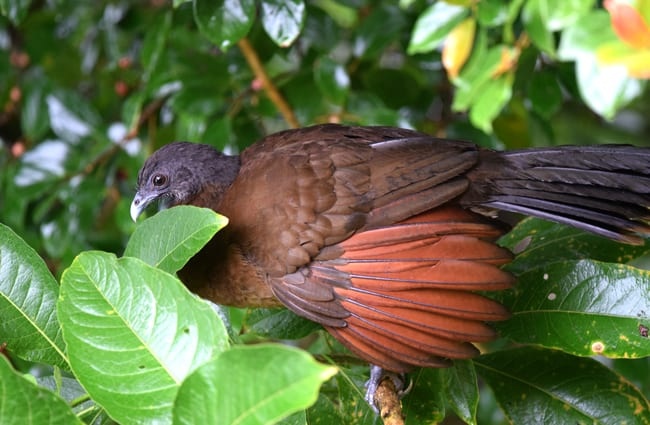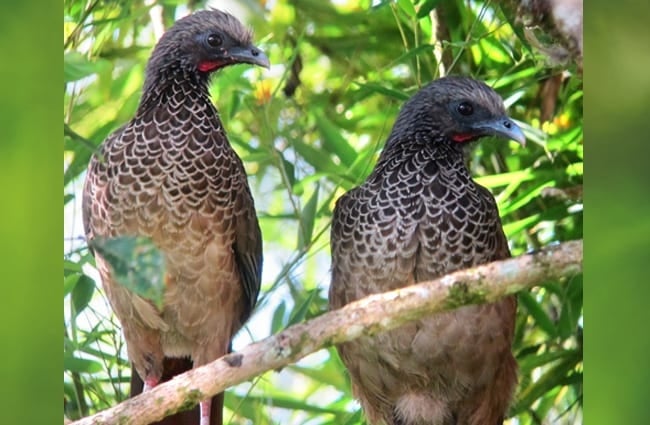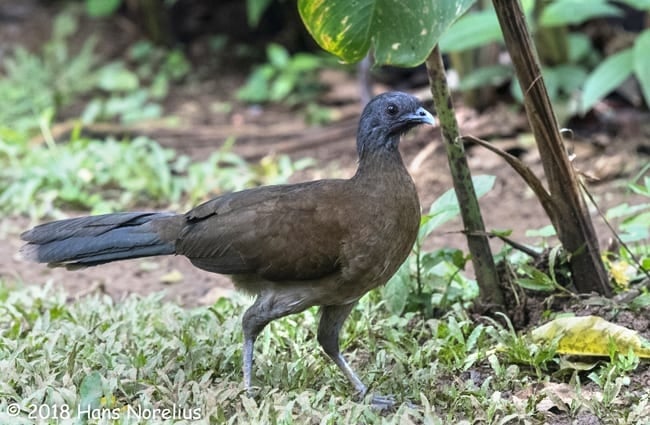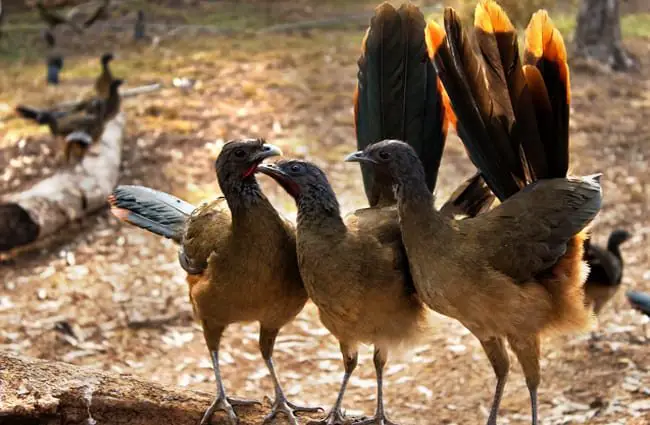Introducing the Chachalaca: A Tropical Avian Wonder
The chachalaca, a name that often elicits curiosity, represents a fascinating group of birds found in the tropical forests and woodlands of Central and South America. These large, pheasant-like birds are known for their distinctive, raucous calls, resembling a strangled laugh or a car alarm. More than just a peculiar sound, these vocalizations are key to understanding their social lives and ecological roles. This comprehensive guide delves into the world of chachalacas, exploring their biology, behavior, habitat, and interactions with both the environment and humans.

What is a Chachalaca? Species Overview
The term “chachalaca” doesn’t refer to a single species, but rather to a group of birds within the Ortalis genus, belonging to the Cracidae family—a group that also includes guans and curassows. Currently, ornithologists recognize six distinct species:
- Plain Chachalaca (Ortalis guttata): Found across a wide range from southern Mexico to northwestern Colombia.
- Grey-headed Chachalaca (Ortalis cinereiceps): Inhabits the Pacific slopes of Colombia and Ecuador.
- Rufous-vented Chachalaca (Ortalis ruficauda): Found in the Andes of Colombia, Ecuador, and Peru.
- White-winged Chachalaca (Ortalis leucogularis): Restricted to the Pacific coast of Mexico.
- Colombian Chachalaca (Ortalis columbiana): Found in the northern Andes of Colombia.
- Azure-crowned Chachalaca (Ortalis canicollis): Found in the highlands of Mexico.
These birds exhibit variations in size, plumage, and vocalizations, but share core characteristics. They are generally large, ranging from 55 to 65 centimeters in length, with long tails and strong legs. Their plumage is typically a mix of brown, grey, and white, providing excellent camouflage within the forest understory.

Habitat and Distribution
Chachalacas are primarily found in tropical and subtropical forests, woodlands, and thickets, extending into more open areas like plantations and gardens. Their distribution varies depending on the species, but they generally occupy elevations ranging from sea level to around 2000 meters. The Plain Chachalaca, for example, has even expanded its range northward into the southwestern United States, adapting to suburban landscapes. They thrive in areas with dense vegetation that provides cover and abundant food sources.
Diet and Foraging Behavior
Chachalacas are omnivorous, meaning they consume a wide variety of foods. Their diet includes fruits, seeds, leaves, insects, and occasionally small vertebrates. They are particularly fond of berries and figs, and play an important role in seed dispersal within their ecosystems. These birds are adept foragers, often seen moving in small groups through the undergrowth, searching for food. They frequently climb into trees to access fruits and leaves, utilizing their strong legs and claws for support.

Evolutionary History
The Cracidae family, to which chachalacas belong, has a long evolutionary history that dates back to the Paleocene epoch. Fossil evidence suggests that early cracids were more widespread than they are today, with representatives found in North America and Europe. Over time, the family diversified, giving rise to the various species we see today. Chachalacas, as a group, are believed to have originated in South America, subsequently expanding their range northward into Central America and Mexico. Their adaptation to different habitats and food sources has contributed to their speciation and ecological success.
Social Behavior and Reproduction
Chachalacas are generally social birds, often found in small groups or flocks, especially during the non‑breeding season. These groups provide increased protection from predators and facilitate foraging. During the breeding season, which typically occurs during the rainy season, chachalacas become more territorial. They engage in elaborate courtship displays, involving vocalizations, strutting, and feather displays.
The birds build relatively simple nests, usually consisting of a platform of sticks and leaves placed in a tree or shrub. The female typically lays three to five eggs, which are incubated for around 25 to 28 days. Both parents participate in raising the chicks, providing food and protection. The young birds fledge after about three weeks, but remain dependent on their parents for several months.

Ecological Role and Interactions
Chachalacas play several important roles within their ecosystems. As seed dispersers, they contribute to forest regeneration and maintain plant diversity. They also serve as prey for predators such as hawks, eagles, and snakes. Additionally, chachalacas influence insect populations through their foraging activities. Their interactions with other species extend to commensal relationships, where they benefit from the presence of other animals, such as consuming fruits dropped by monkeys.
Chachalacas and Humans
Chachalacas have a long history of interaction with humans. In some regions, they are hunted for food, although their populations are generally stable. They are also considered agricultural pests in some areas, as they may feed on crops like corn, beans, and banana. However, their ecological benefits often outweigh these negative impacts. In certain cultures, chachalacas are featured in folklore and traditional stories, reflecting their cultural significance.
In recent years, chachalacas have become increasingly common in suburban and urban areas, adapting to human‑modified landscapes. They are often seen foraging in gardens and parks, and their distinctive calls have become a familiar sound in many communities. This increased proximity to humans has led to both positive and negative interactions, highlighting the need for conservation efforts that balance human interests with the well‑being of these fascinating birds.

Interesting Facts about Chachalacas
- The “Laughing Bird”: Chachalacas are often referred to as “laughing birds” due to their unique, raucous calls.
- Strong Swimmers: Despite being birds, chachalacas are capable swimmers and will use this ability to escape predators.
- Cooperative Breeding: In some species, young birds may remain with their parents and help raise subsequent broods, exhibiting cooperative breeding behavior.
- Adaptable Diet: Chachalacas are remarkably adaptable in their diet, consuming a wide variety of foods depending on availability.
- Expanding Range: The Plain Chachalaca has been steadily expanding its range northward, becoming a common sight in parts of the southwestern United States.
Chachalacas stand as captivating examples of avian adaptation and ecological importance. Their unique characteristics, coupled with their intriguing behaviors, make them a compelling subject for both scientists and nature enthusiasts. By understanding and appreciating these remarkable birds, we can contribute to their conservation and ensure their continued presence in the tropical landscapes they call home.

![Red Angus Closeup of a beautiful Red Angus cowPhoto by: U.S. Department of Agriculture [pubic domain]https://creativecommons.org/licenses/by/2.0/](https://animals.net/wp-content/uploads/2020/03/Red-Angus-4-238x178.jpg)




![Red Angus Closeup of a beautiful Red Angus cowPhoto by: U.S. Department of Agriculture [pubic domain]https://creativecommons.org/licenses/by/2.0/](https://animals.net/wp-content/uploads/2020/03/Red-Angus-4-100x75.jpg)

